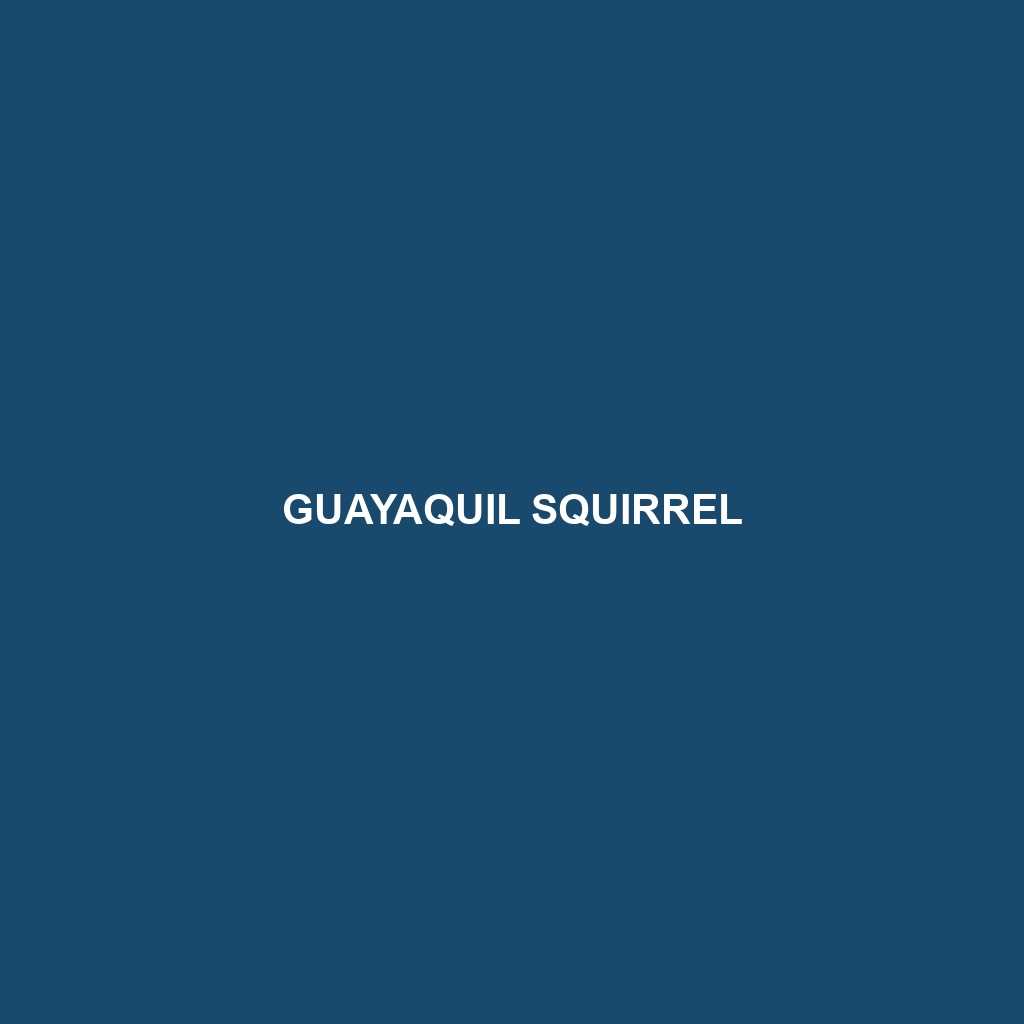Guayaquil Squirrel ()
Common Name: Guayaquil Squirrel
Scientific Name:
Habitat
The Guayaquil Squirrel primarily inhabits the tropical and subtropical forests of the western foothills of the Andes in Ecuador. This species is commonly found in urban areas, gardens, and agricultural lands, where it has adapted well to human presence. The primary regions include Guayaquil and surrounding coastal areas, where warm temperatures and a variety of tree species provide ideal living conditions.
Physical Characteristics
Guayaquil Squirrels are medium-sized rodents, typically measuring between 20 to 30 centimeters in body length, with additional tail lengths of about 20 to 25 centimeters. Their fur is generally a mix of gray and brown hues, with a distinctive crest of white fur along the sides of their heads. Notable features include their large, bushy tails and keen, bright eyes, which aid their foraging activities.
Behavior
Known for their agile movement, Guayaquil Squirrels are diurnal and primarily active during the day. They are highly social animals, often seen in pairs or small groups, engaging in playful interactions. They communicate through a series of vocalizations and body language. Additionally, they are excellent climbers, frequently seen foraging for food high in trees and leaping across branches with ease.
Diet
The diet of the Guayaquil Squirrel primarily consists of a variety of fruits, nuts, seeds, and flowers. They are particularly fond of guava and other tropical fruits, which are abundant in their native habitat. Their feeding habits also include raiding bird feeders, showcasing their adaptability to human environments. This omnivorous diet is crucial for their energy and overall health.
Reproduction
Guayaquil Squirrels exhibit a monogamous breeding system, with mating typically occurring between late summer and early fall. After a gestation period of approximately 30 to 40 days, females give birth to a litter of 2 to 4 offspring. The young are born blind and helpless, relying entirely on their mother for nourishment and protection during the first weeks of life.
Conservation Status
The Guayaquil Squirrel is currently classified as vulnerable due to habitat loss and fragmentation caused by urbanization and agricultural expansion. Conservation efforts are being initiated to protect their remaining habitats and promote awareness of this unique species.
Interesting Facts
Guayaquil Squirrels are not only fascinating due to their adaptability but also for their role in seed dispersal. As they consume various fruits, they inadvertently help in the propagation of plant species within their ecosystem. Furthermore, they have become a symbol of urban wildlife in Guayaquil, contributing to the region’s biodiversity.
Role in Ecosystem
In their ecosystem, Guayaquil Squirrels play a vital role as both herbivores and seed dispersers. By feeding on fruit and nuts, they help in the growth and spread of many plant species, illustrating their importance in maintaining the ecological balance. Their interactions with other species, including predators and competing herbivores, further highlight their significance within their natural habitat.
